I submitted my »Critical Review of Practice« on 29. July 2021. The slideshow below shows the document, the list of figures and the references are listed below.
There were two appendices in the original file that are not included in this post: Professor Steve Bisson’s review of »Greetings from the Parade Ground« and Gudrun Hausl’s article that was published in the »Darmstädter Echo«.
List of Figures:
Figure 1: Marcel RAUSCHKOLB. 2021. Bunker camouflage.
Figure 2: Marcel RAUSCHKOLB. 2021. Former Officers Mess, Lilienthalstrasse.
Figure 3: Unknown maker. Stamped 1905. Kurgäste zur Entfettungskur a.d. Griesheimer Sand [postcard, own collection].
Figure 4: Unknown maker. 1929. Stube 144, Infanterie Regiment Nr. 151e, 3. Kompanie, 25. August 1929. [img621] Sammlung Peter Merschroth [online image]. Available at:
http://www.sammlung-merschroth.de/Griesheim_Sand/Franzosenzeit/franzosenzeit.html [accessed 4 Dec 2020]
Figure 5: Unknown maker. 1964. Nike display Griesheim. Archive of the »Förderverein August-Euler-Museum e.V.«
Figure 6: Marcel RAUSCHKOLB. 2021. Map of the site’s location. [Bing Maps screenshot, map of Germany from TIBELIUS, Alexander. 2014. The Map Design Toolbox. Berlin: Gestalten., drawing]
Figure 7: Marcel RAUSCHKOLB. 2020. »The Parade Ground«. From the portfolio ‘Greetings from the Parade Ground (Grüsse Vom Übungsplatz)’ [online]. Available at: https://www.marcelrauschkolb.de/greetingsfromtheparadeground [accessed 28 Jan 2021].
Figure 8: Marcel RAUSCHKOLB. 2020. Religion as a vital part of the settlement. From the portfolio ‘The Paprika Village (Das Paprikadorf)’ [online]. Available at: https://www.marcelrauschkolb.de/thepaprikavillage [accessed 11 Feb 2021].
Figure 9: Marcel RAUSCHKOLB. 2020. »Missiles and Mythology«. From the portfolio ‘Greetings from the Parade Ground (Grüsse Vom Übungsplatz)’ [online]. Available at: https://www.marcelrauschkolb.de/greetingsfromtheparadeground [accessed 28 Jan 2021].
Figure 10: Stadt Griesheim. 2016. ‘Konversionsfläche „Süd-Ost“: Griesheim’. [Post-use concept »Conversion Southeast«] [online]. Available at:
https://www.griesheim.de/wohnen-umwelt/konversionsflaeche-sued-ost/ [accessed 10 Feb 2021].
Figure 11: Marcel RAUSCHKOLB. 2021. Inside the »August-Euler-Museum«.
Figure 12: Unknown maker. No Date. Camillo’s theatre. Stanford Visual Arts Services interpretation [online]. Available at: http://socks-studio.com/2019/03/03/spatializing-knowledge-giulio-camillos-theatre-of-memory-1519-1544/ [accessed 15 Nov 2020].
Figure 13: Marcel RAUSCHKOLB. 2021. »Hitlerjugend«.
Figure 14: Unkown maker. 1946. My father in Mulsanne [photographic print, own collection].
Figure 15: Unknown maker. 1941. ‘My father’s statement’. Front und Heimat Mitteilungsblatt der NSDAP Ortsgruppe Griesheim Kreis Darmstadt, 11 Oct. The text reads:
»Sailor-Lance Corporal Rauschkolb, Willy, Alte Darmstädterstr. 24
… We have been sailing as a front unit for almost three weeks now and have already been allowed to carry out three decisive actions. For example, we were used as a fire protection for the brave assault boats during the storming of Oesel and Moon. … Most of the Soviet sailors resisted their rescue tooth and nail and were then quite astonished when we did not burn out their eyes and cut off their tongues …« [Own, Deepl.com translation]
Figure 16: Marcel RAUSCHKOLB. 2021. The »Souvenir of Germany« photo album [own collection].
Figure 17: Marcel RAUSCHKOLB. 2020. The change of a street (Nehringstrasse). From the portfolio ‘The Paprika Village (Das Paprikadorf)’ [online]. Available at: https://www.marcelrauschkolb.de/thepaprikavillage [accessed 11 Feb 2021].
Figure 18: Marcel RAUSCHKOLB. 2020. »Hessenflieger« und »Darmstadt Flying-Club«. From the portfolio ‘Greetings from the Parade Ground (Grüsse Vom Übungsplatz)’ [online]. Available at: https://www.marcelrauschkolb.de/greetingsfromtheparadeground [accessed 28 Jan 2021].
Figure 19: Marcel RAUSCHKOLB. 2021. The former Nike-missile launch site (1964) [montage].
Figure 20: Marcel RAUSCHKOLB. 2021. The former Nike-missile launch site (today) [image grid].
Figure 21, 22: Marcel RAUSCHKOLB. 2021. Cardboard dummies for a photographic sculpture and a grid.
Figure 23: Marcel RAUSCHKOLB. 2021. Physical grid [oak wood, photo paper].
Figure 24, 25: Marcel RAUSCHKOLB. 2021. Pop-up object »Pre-WW1 soldiers«.
Figure 26: Marcel RAUSCHKOLB. 2021. Pop-up object »Stars and Stripes-Compound«.
Figure 27: Marcel RAUSCHKOLB. 2021. Newspaper cut-outs from the »Griesheimer Anzeiger« and the »Stars and Stripes«.
Figure 28: Marcel RAUSCHKOLB. 2021. Uncut View-Master slides.
Figure 29: Marcel RAUSCHKOLB. 2021. View-Master camera.
Figure 30: Marcel RAUSCHKOLB. 2021. Argus C3 camera.
Figure 31: Marcel RAUSCHKOLB. 2021. Print from an Argus C3 negative.
Figure 32: Marcel RAUSCHKOLB. 2021. Distorted building on the former missile launch site.
Figure 33: Unknown maker. 2006. Wall painting in an abandoned military building. Archive of the »Förderverein August-Euler-Museum e.V.«
Figure 34: Tobias WOOTTON. 2016. View of the exhibition »Aby Warburg. Mnemosyne Bilderatlas« at ZKM | Center for Art and Media, Karlsruhe. Available at: https://zkm.de/de/event/2016/09/aby-warburg-mnemosyne-bilderatlas/der-mnemosyne-bilderatlas [accessed 13 Nov 2020].
Figure 35: Mark KLETT. 2002. Four views from four times and one shoreline, Lake Tenaya. [online image]. Available at: http://www.markklettphotography.com/yosemite-in-time [accessed 27 Jul 2020].
Figure 36: Andrea BOTTO. 2014. ‘19.06_26.08.1945’. Andrea Botto Photography [online]. Available at: https://www.andreabotto.it/19-06_26-08-1945/ [accessed 29 Oct 2020].
Figure 37: Andrea BOTTO. 2015. ‘19.06_26-08.1945 Limited Edition Prints’. Andrea Botto Photography [online]. Available at: https://www.andreabotto.it/en/prodotto/19-06_26-08-1945-limited-edition-prints/ [accessed 11 Feb 2021].
Figure 38: Aikaterini GEGISIAN. 2020. ‘The Sea Blues (2016)’. Aikaterini Gegisian [online]. Available at: https://gegisian.com/portfolio/the-sea-blues/ [accessed 8 Nov 2020].
Figure 39: Gareth PHILLIPS. 2021. NH5 – First Edition – Wales, UK. [online]. Available at: http://www.garethphillipsphotography.com/NH5-First-Edition-Wales-UK [accessed 21 Jun 2021].
Figure 40: Marcel RAUSCHKOLB. 2021. Folder, box and book layouts.
Figure 41: Marcel RAUSCHKOLB. 2021. Map of the »Walk through history« [Bing Maps screenshot and drawing].
Figure 42, 43, 44: Marcel RAUSCHKOLB. 2021. Layouts for the outdoor exhibition.
Figure 45: HAUSL, Gudrun. 2021. ‘Es gilt die Details der Welt zu dokumentieren’. Darmstädter Echo : die unabhängige politische Tageszeitung Südhessens, 6 Jul, 18.
References:
Earlier portfolios about the site this mentioned in the text:
RAUSCHKOLB, Marcel. 2021. ‘The Paprika Village (Das Paprikadorf)’. Marcel Rauschkolb Photography [online]. Available at: https://www.marcelrauschkolb.de/thepaprikavillage [accessed 28 Jan 2021].
RAUSCHKOLB, Marcel. 2021. ‘Greetings from the Parade Ground (Grüsse Vom Übungsplatz)’. Marcel Rauschkolb Photography [online]. Available at: https://www.marcelrauschkolb.de/greetingsfromtheparadeground [accessed 28 Jan 2021].
Other references:
BENJAMIN, Walter. 2011. Gesammelte Werke. (Translated with http://www.DeepL.com) Frankfurt a. M: Zweitausendeins.
GROMES, Gustl. 1989. St. Stephan von A bis Z. (my translation) Griesheim: V. Bassenauer Gmbh.
ECKSTEIN, Ursula. 2008. Ecksteins Luftfahrtgeschichte Darmstadt. Darmstadt: Justus von Liebig Verlag.
KALTENECKER, Krisztina. 2003. ‘Über Die Entstehung Der Ungarndeutschen Siedlung Sankt Stephan Bei Darmstadt. Eine Kommentierte Quellenausgabe’. In: Dr. Schwing, Josef (Red.): Suevia Pannonica. Archiv der Deutschen aus Ungarn. Jahrgang 21 (31) 2003. Chroma Verlag. Römerberg-Berghausen. S. 37-47 [online]. Available at: https://www.academia.edu/38970162/%C3%9Cber_die_Entstehung_der_ungarndeutschen_Siedlung_Sankt_Stephan_bei_Darmstadt._Eine_kommentierte_Quellenausgabe [accessed 4 Jul 2020].
BISSON, Steve. 2021. ‘LANDSCAPE OF REMEMBRANCE. WHAT FOR?’ Urbanautica [online]. Available at: https://urbanautica.com/review/landscape-of-remembrance-what-forij/2348 [accessed 31 Mar 2021].
CRITCHLEY, Simon. 2015. Memory Theater. New York: Other Press.
CROSS, Karen and Julia PECK. 2010. ‘Editorial: Special Issue on Photography, Archive and Memory’. photographies 3(2), 127–38.
FABRIZI, Mariabruna. 2019. ‘Spatializing Knowledge: Giulio Camillo’s Theatre of Memory (1519-1544) – SOCKS’. [online]. Available at: http://socks-studio.com/2019/03/03/spatializing-knowledge-giulio-camillos-theatre-of-memory-1519-1544/ [accessed 15 Nov 2020].
CAMMANN, Alexander. 2007. ‘Familienchronik: Der Epochenpanoramiker’. Die Tageszeitung: taz, 19 May [online]. Available at: https://taz.de/!5199675/ [accessed 21 Jul 2021].
HIRSCH, Marianne. 2008. ‘The Generation of Postmemory’. Poetics Today 29(1), 103–28.
‘Woher Kommt Souvenir | Wortherkunft von Souvenir | Wissen.De’. 2021. [online]. Available at: https://www.wissen.de/wortherkunft/souvenir [accessed 20 Jul 2021].
‘Duden | Andenken | Rechtschreibung, Bedeutung, Definition, Herkunft’. 2021. Duden [online]. Available at: https://www.duden.de/rechtschreibung/Andenken [accessed 20 Jul 2021].
‘theatre’. 2021. [online]. Available at: https://dictionary.cambridge.org/de/worterbuch/englisch/theatre [accessed 20 Jul 2021].
FAMULLA, Ute, Kai-Uwe HEMKEN, Christoph SCHADEN and Kris SCHOLZ. 2019. Bauhaus Und Die Fotografie: Zum Neuen Sehen in Der Gegenwartskunst = Bauhaus and Photography ; New Vision in Contemporary Art. Edited by Corina Gertz. Bielefeld: Kerber Verlag.
PERKINS, Chris. 2009. ‘Thinking about Maps’ 25.
Joseph Beuys – ‘Dank an Wilhelm Lehmbruck’ (Letzte Rede) [Film]. 2013. Available at: https://www.youtube.com/watch?v=oNqgNz8biM8 [accessed 1 Sep 2020].
HKW – HAUS DER KULTUREN DER WELT. 2020. Befragung des Atlas – Episode 1 [Film]. Berlin. Available at: https://www.youtube.com/watch?v=gZuYJhWDBoU [accessed 21 Nov 2020].
SCAFI, Alessandro. 2020. ‘Mapping Worlds: Medieval to Modern’ [Short Course, own notes]. Available at: https://warburg.sas.ac.uk/events/event/23596.
MARGOLIS, Eric and L PAUWELS. 2011. The SAGE Handbook of Visual Research Methods. Los Angeles: SAGE.
BOTTO, Andrea. 2020. ‘19.06_26.08.1945’. Andrea Botto Photography [online]. Available at: https://www.andreabotto.it/19-06_26-08-1945/ [accessed 29 Oct 2020].
ZHENGOVÁ, Linda. 2020. ‘AIKATERINI GEGISIAN: Handbook of the Spontaneous Other’. GUP Magazine [online]. Available at: https://gupmagazine.com/books/aikaterini-gegisian-handbook-of-the-spontaneous-other-2/ [accessed 23 Jul 2021].
GEGISIAN, Aikaterini. 2020. ‘The Sea Blues (2016)’. Aikaterini Gegisian [online]. Available at: https://gegisian.com/portfolio/the-sea-blues/ [accessed 8 Nov 2020].
PHILLIPS, Gareth. 2021. ‘Gareths Phillips Guest Lecture for Falmouth’. [online, own notes]. Available at: https://web.microsoftstream.com/embed/video/a2575d95-594c-4bf1-8547-d921007b3912?autoplay=false&showinfo=true&forceServerAuth=true [accessed 23 Jul 2021].


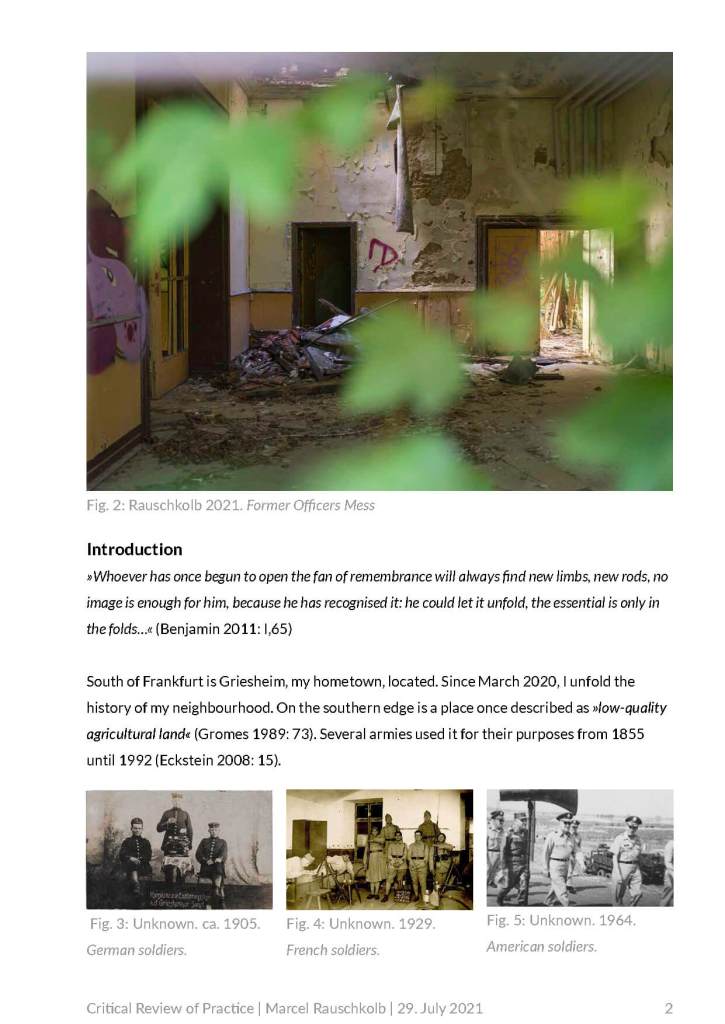

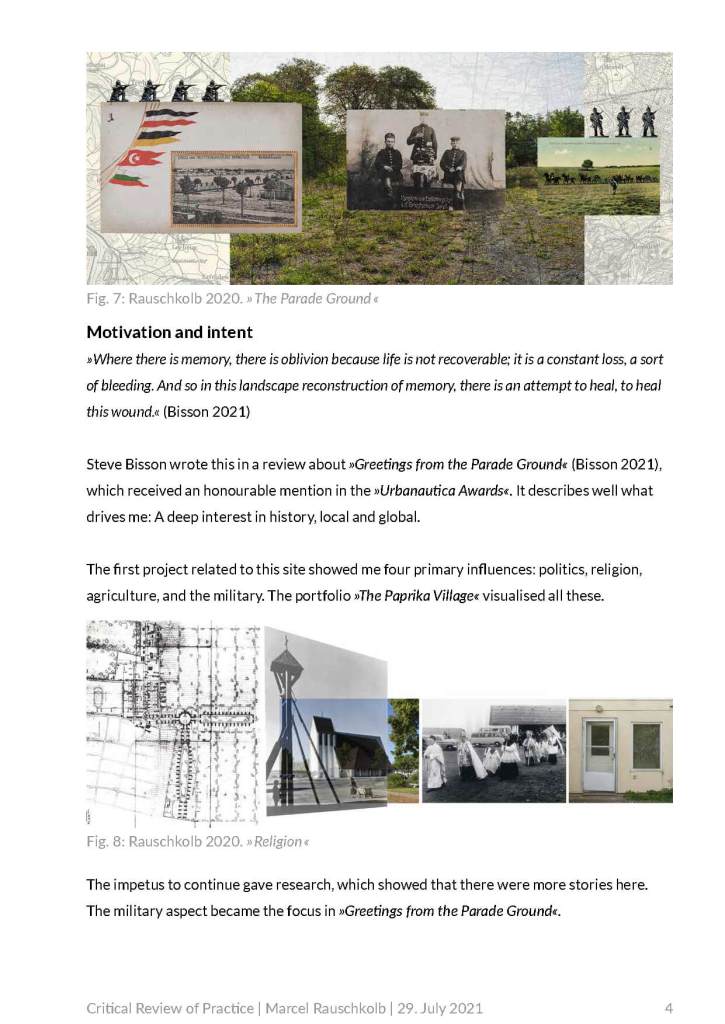


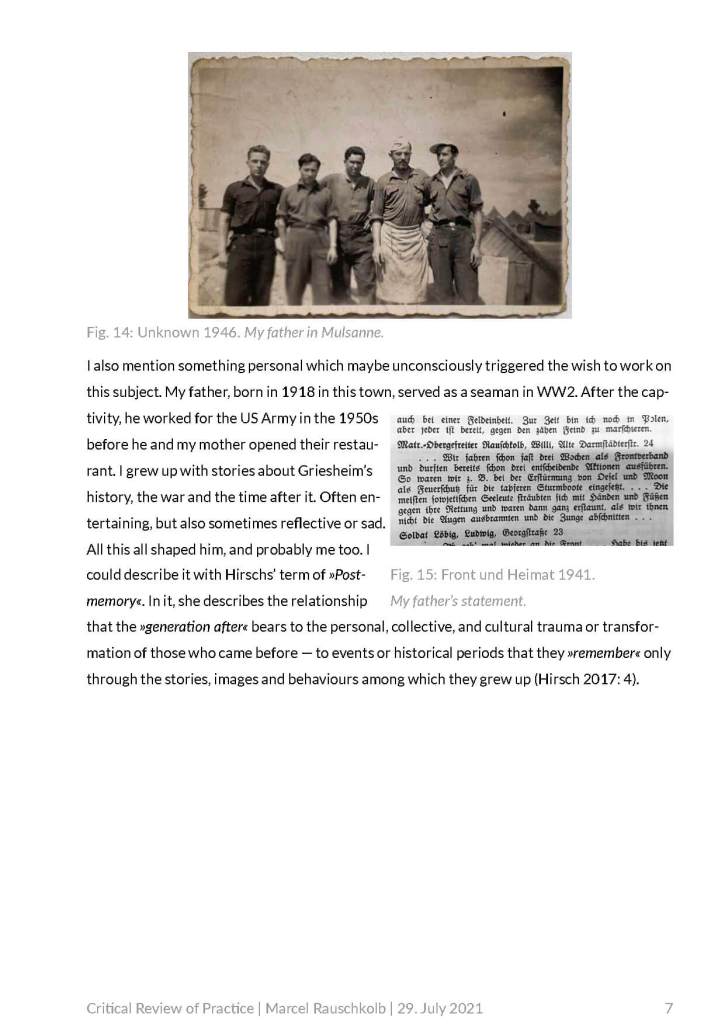



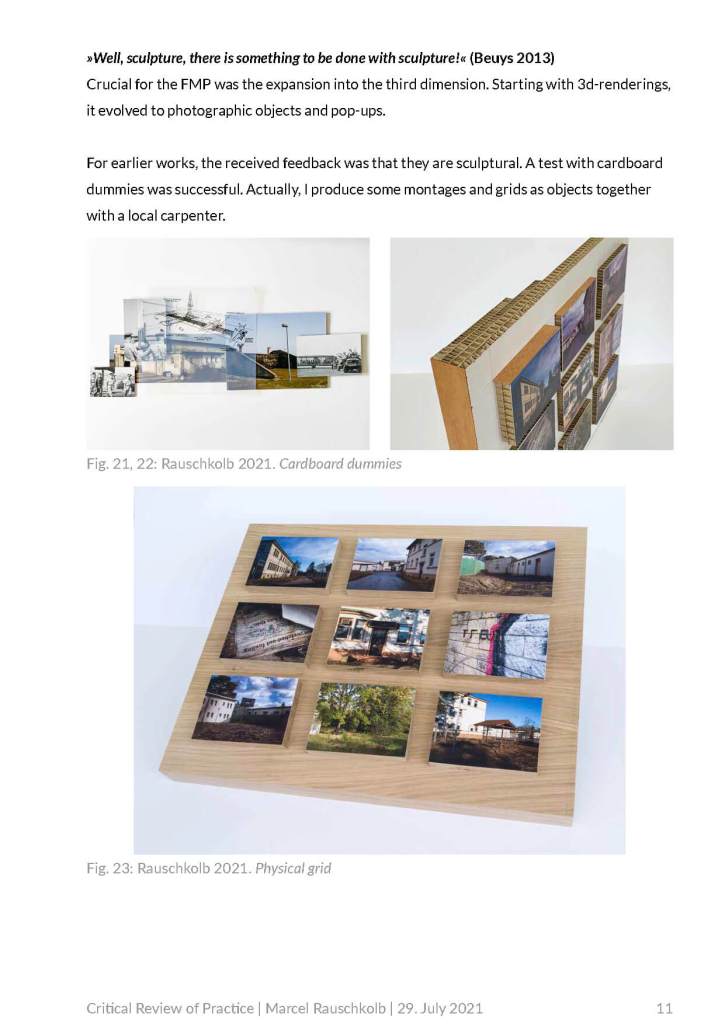
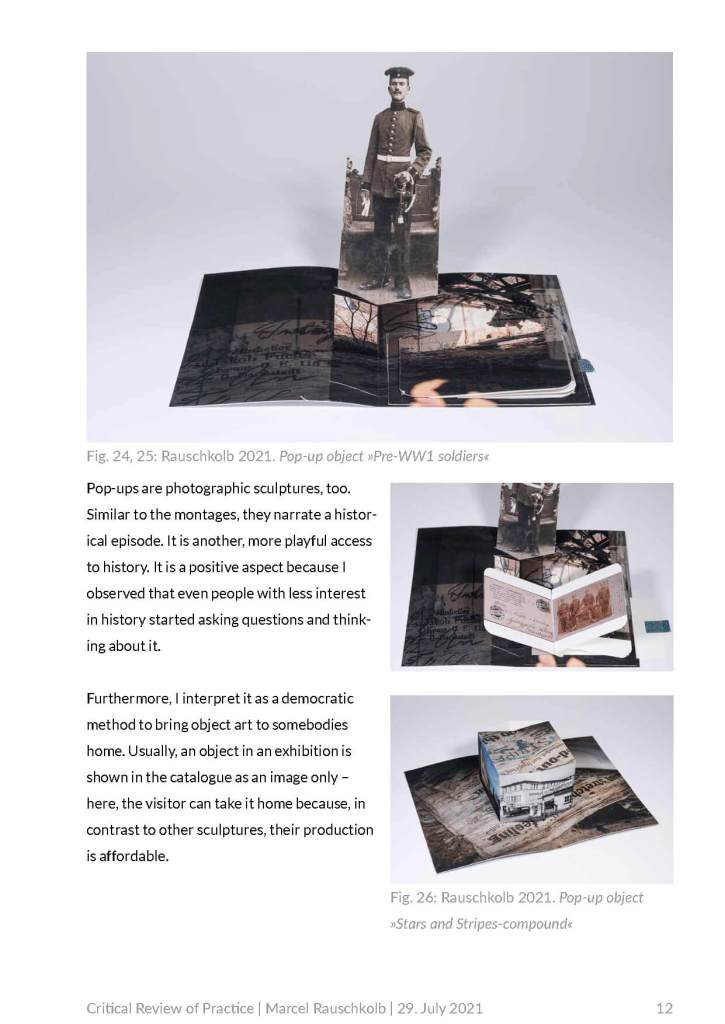






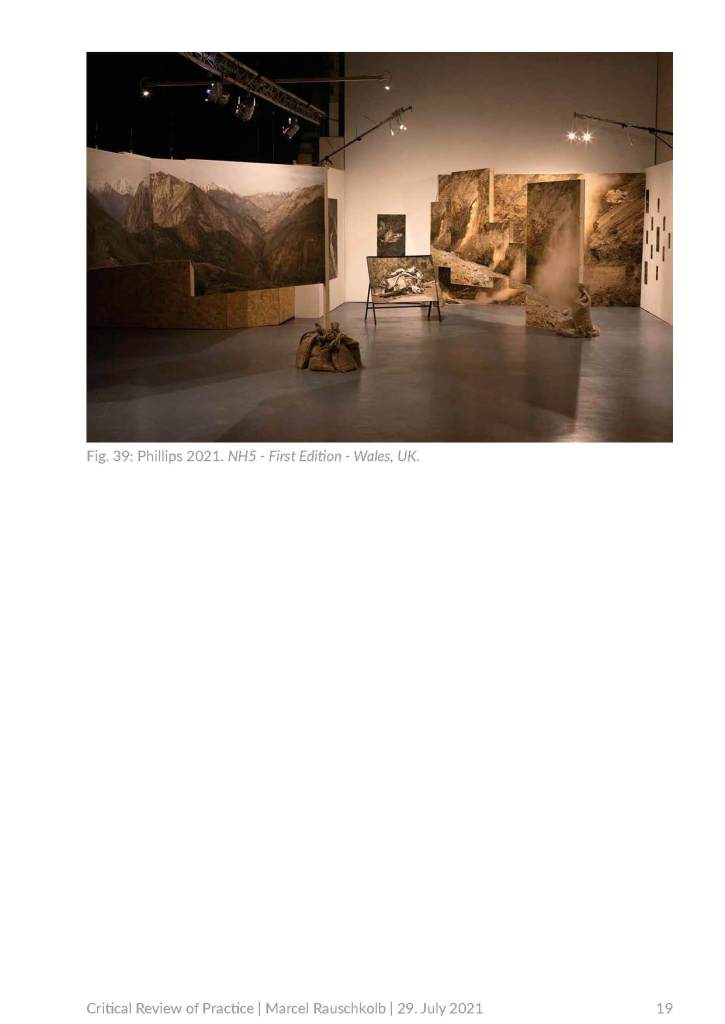


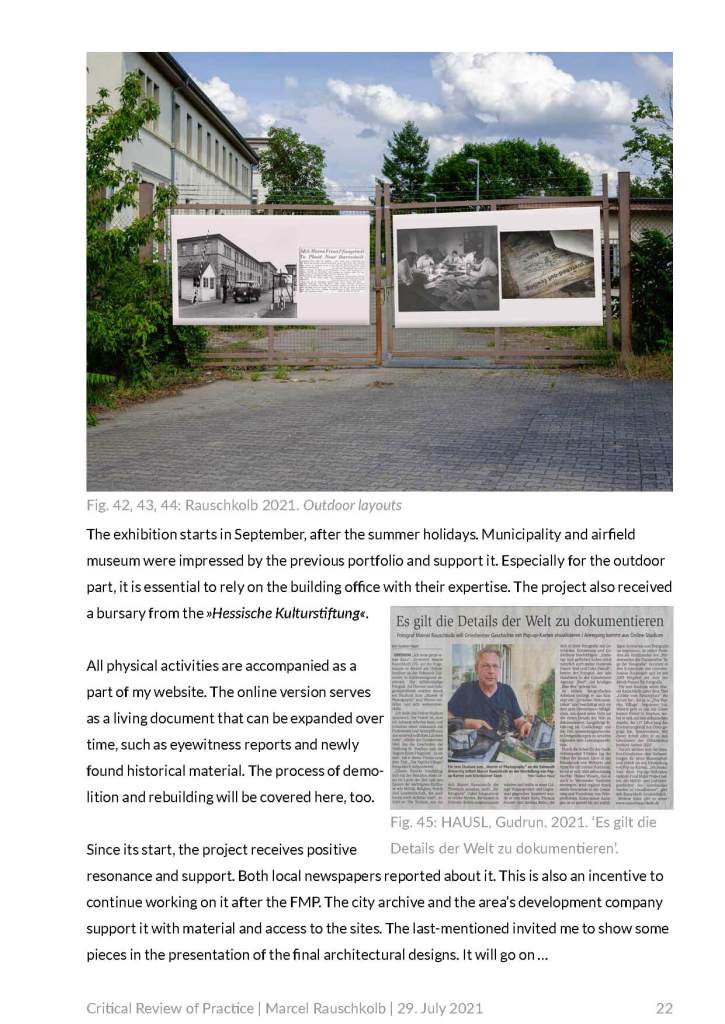


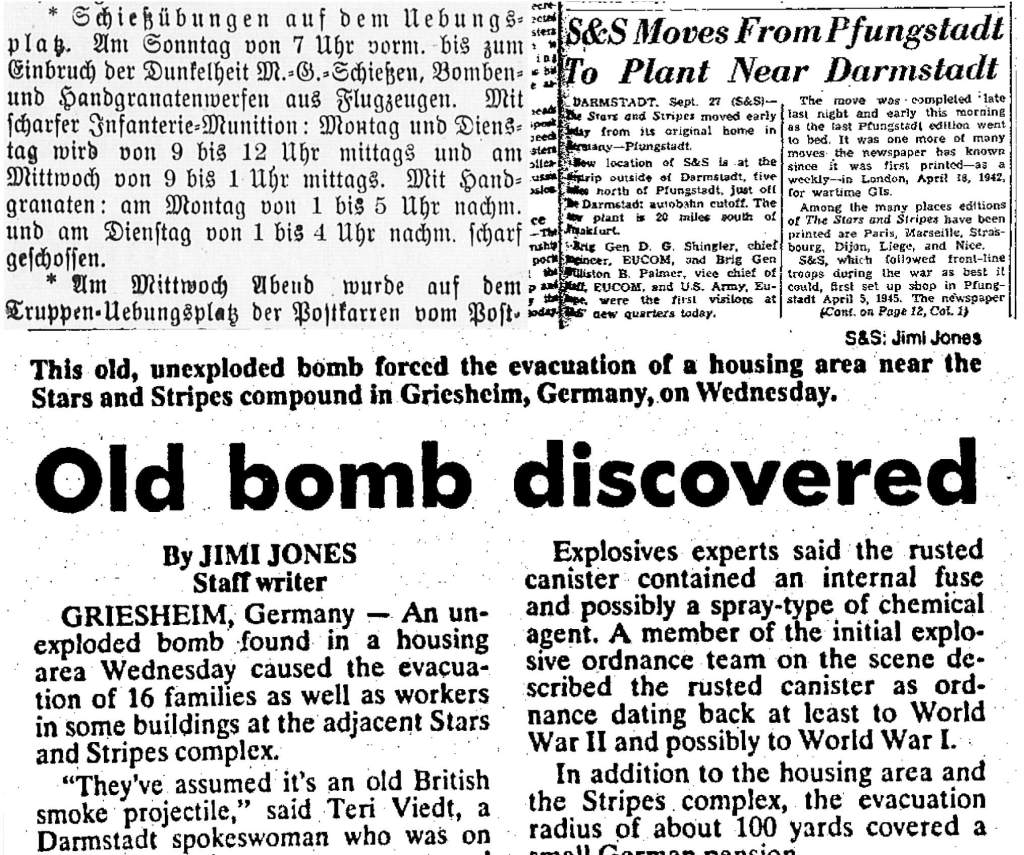








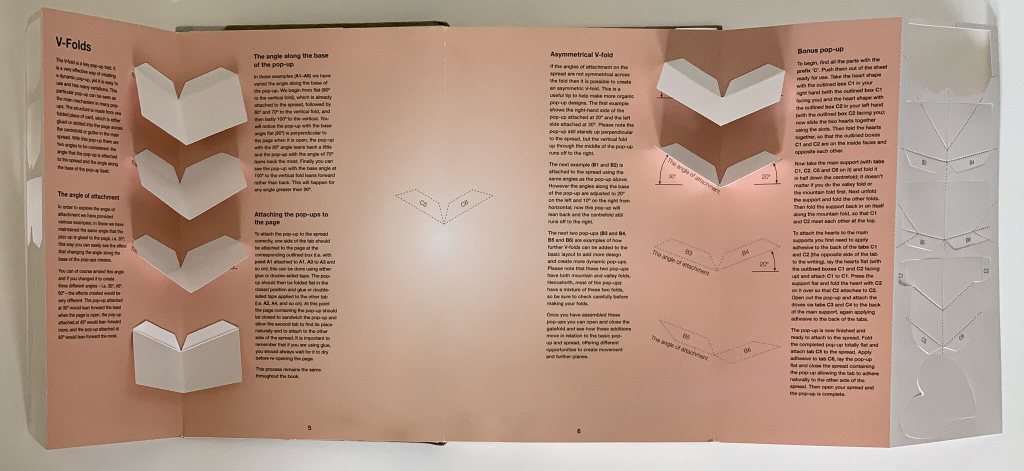









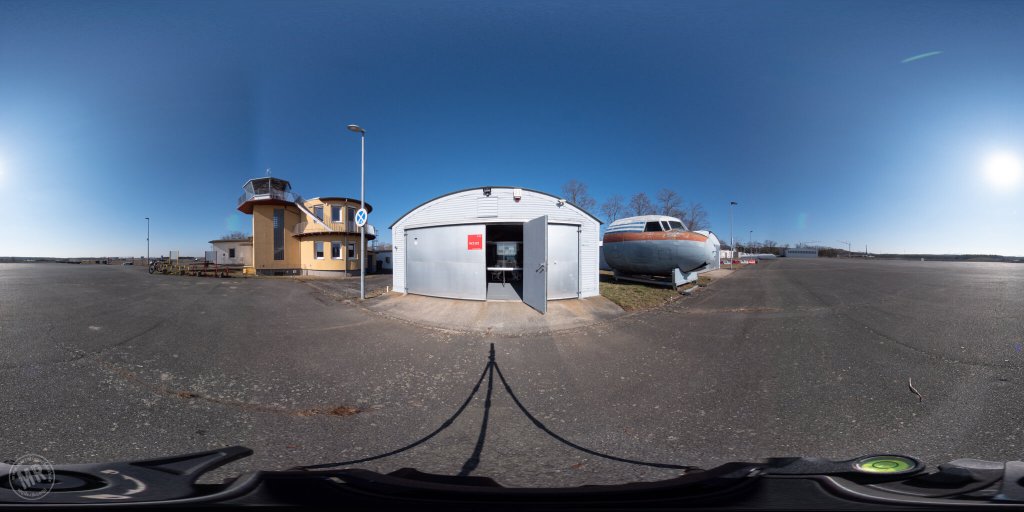

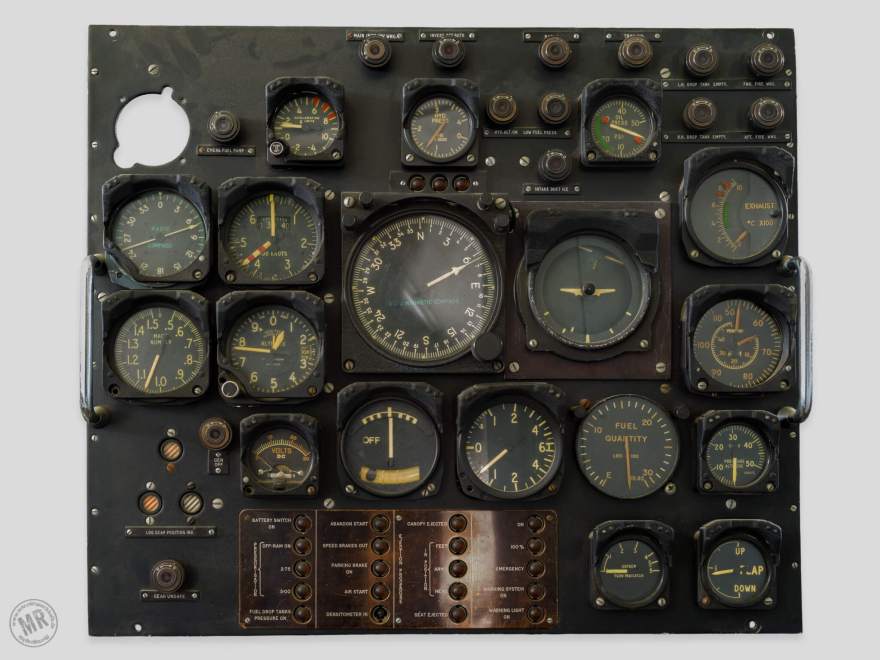

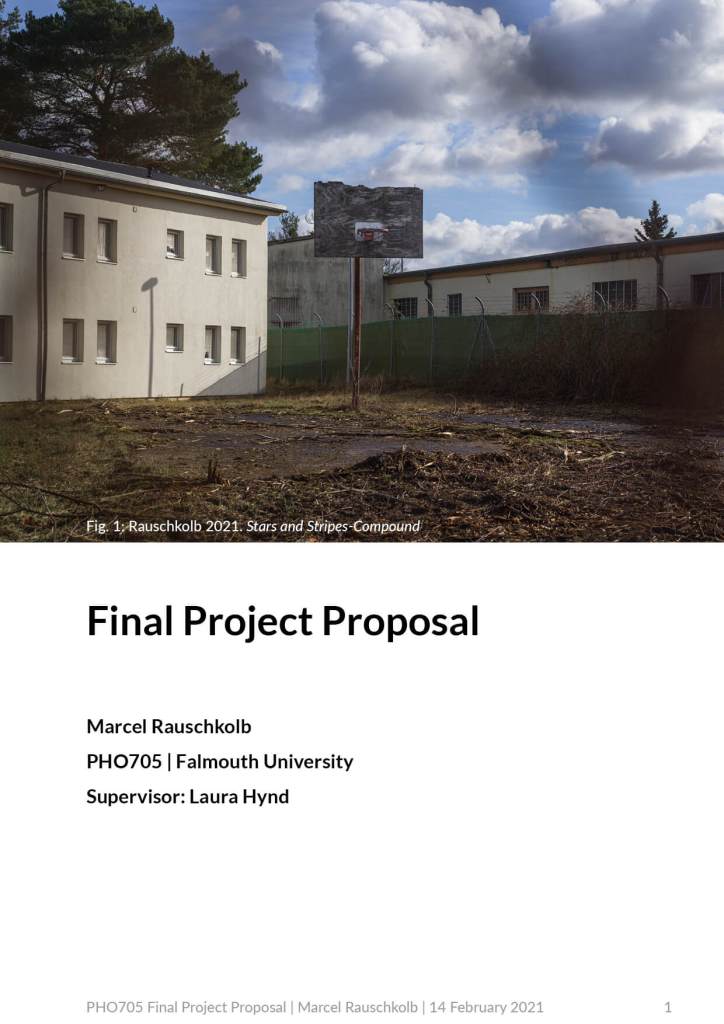




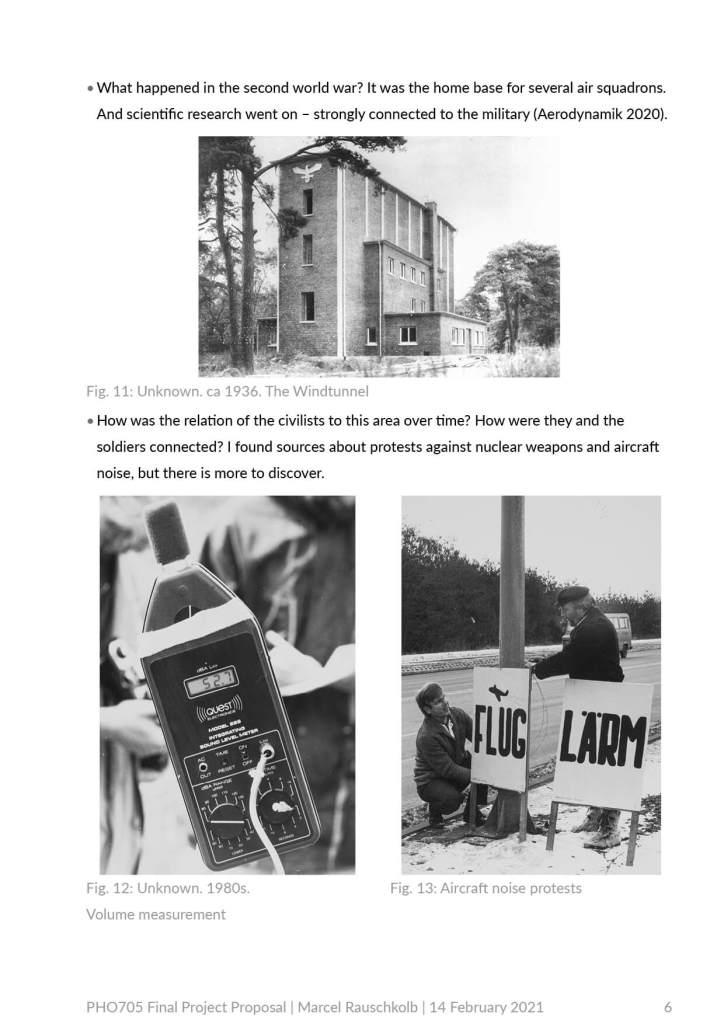
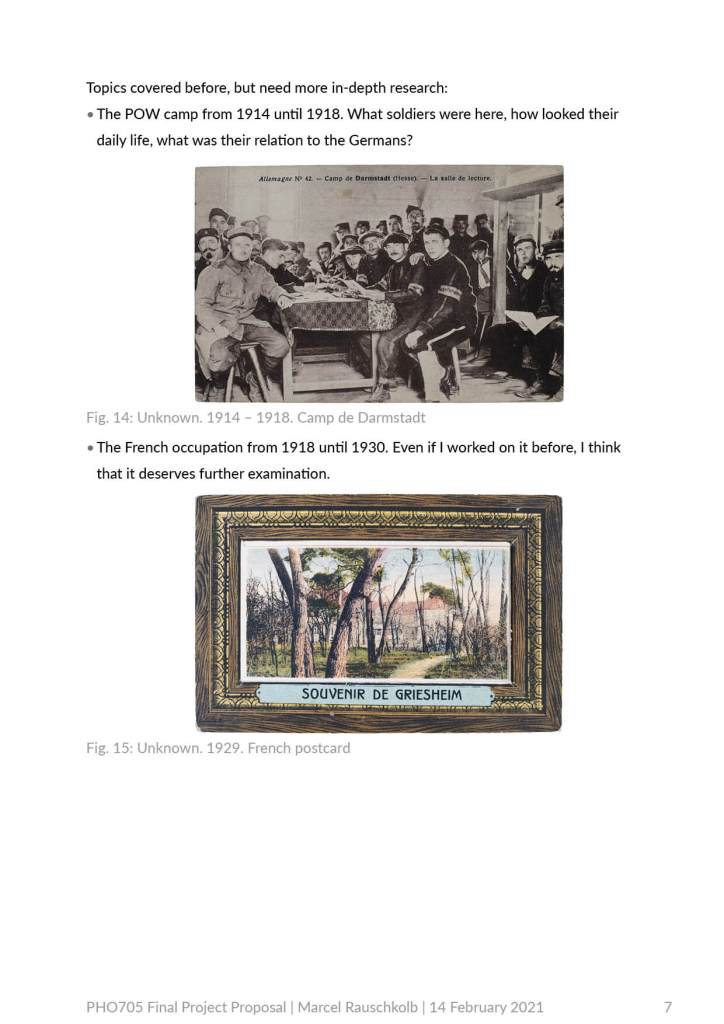
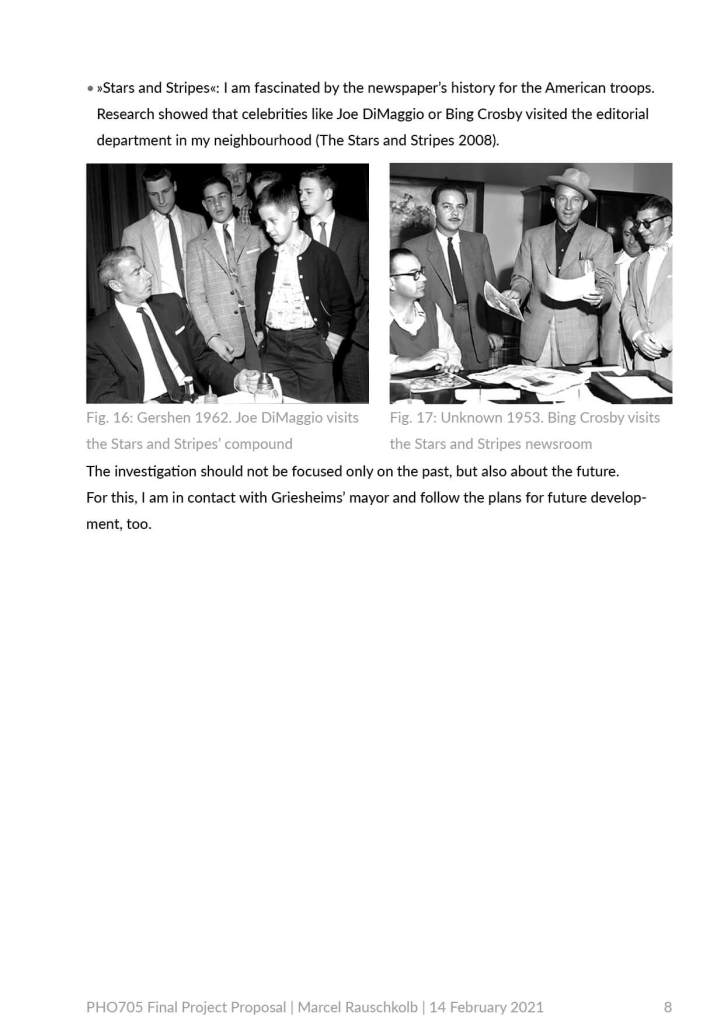

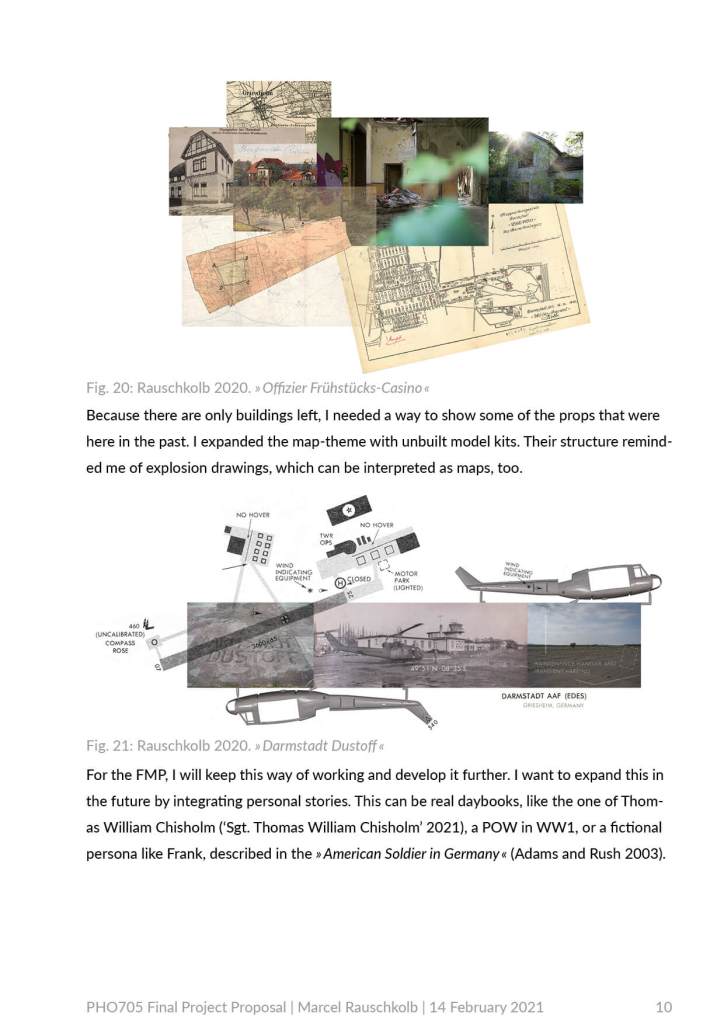
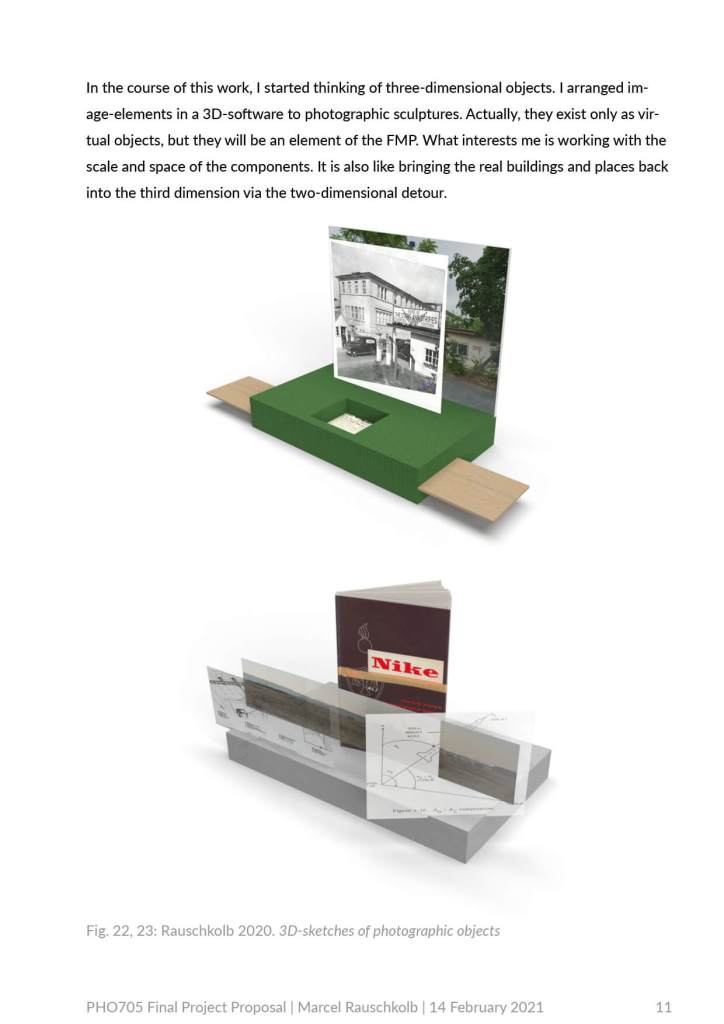
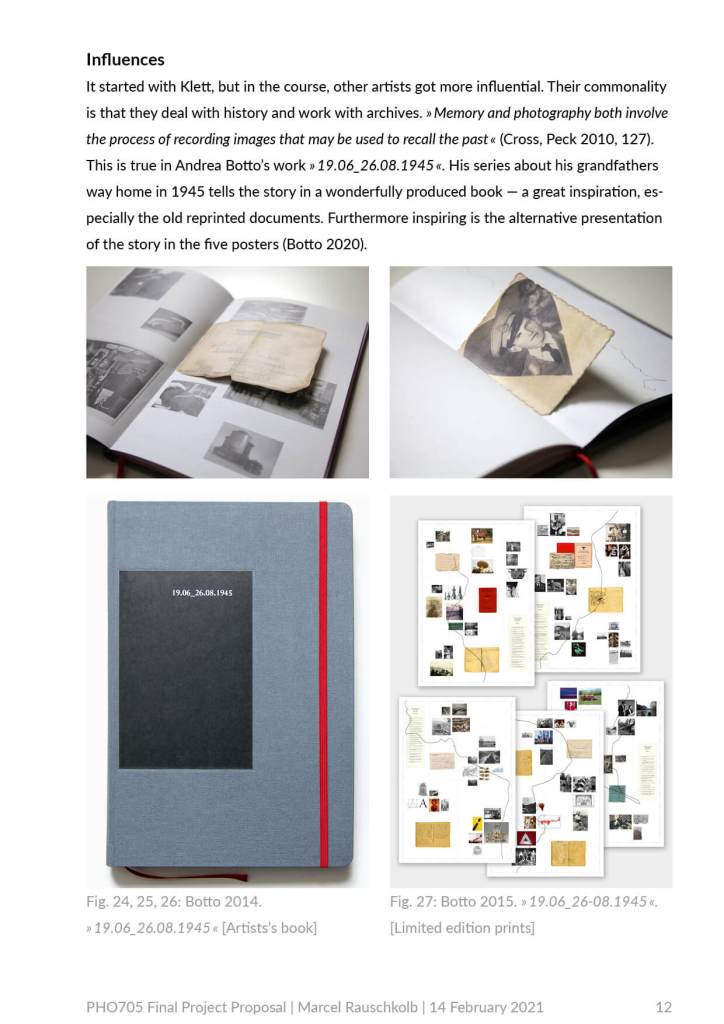

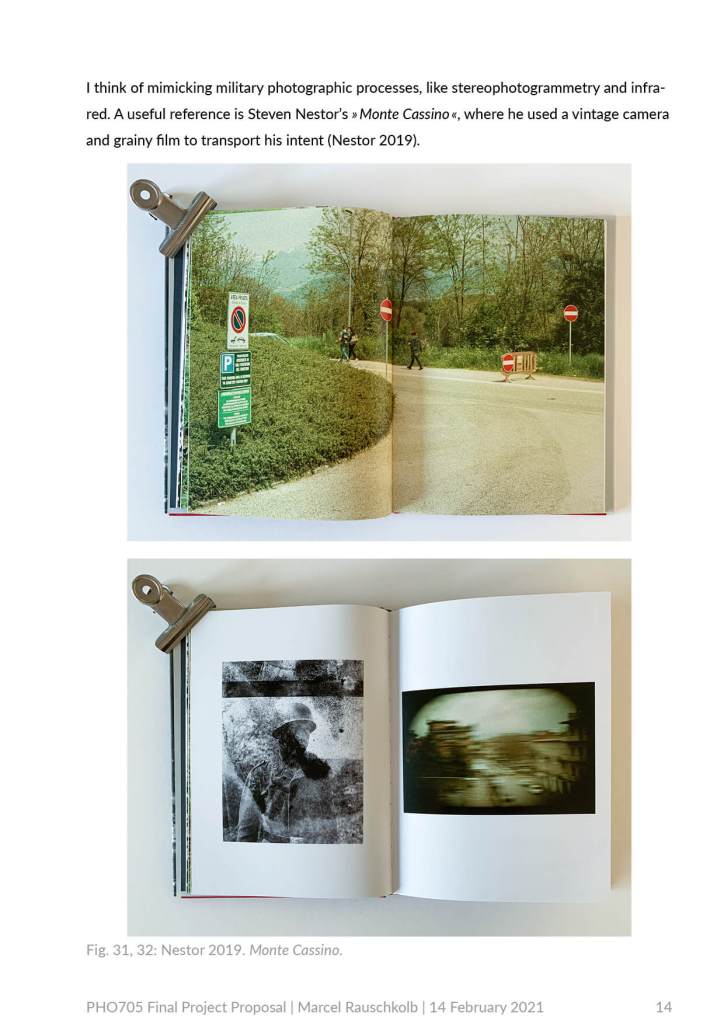

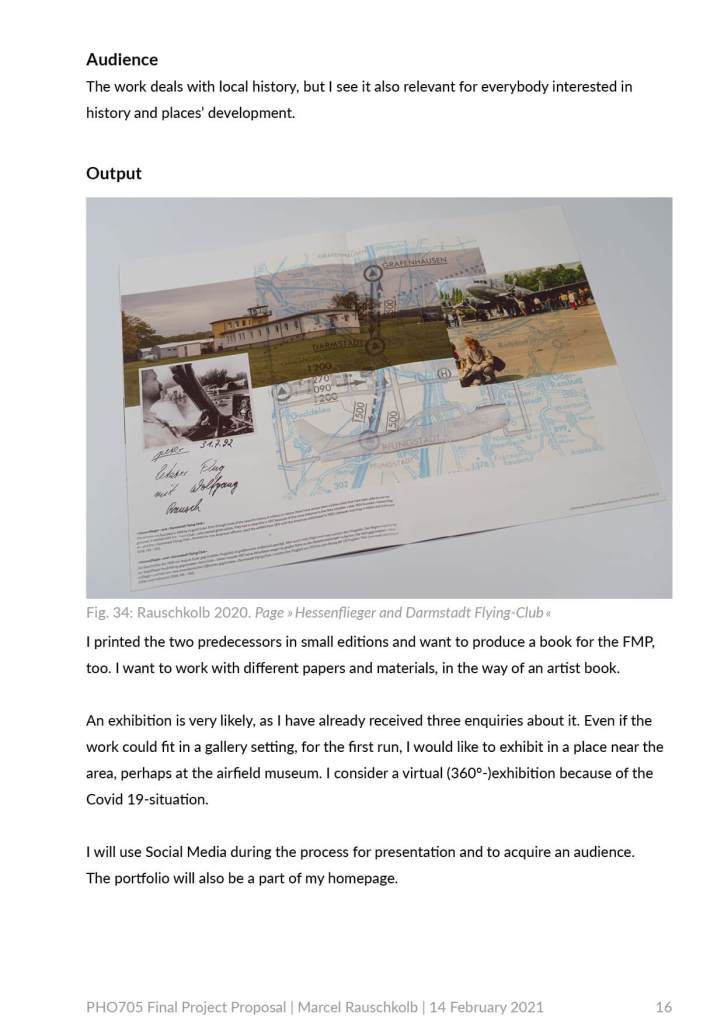

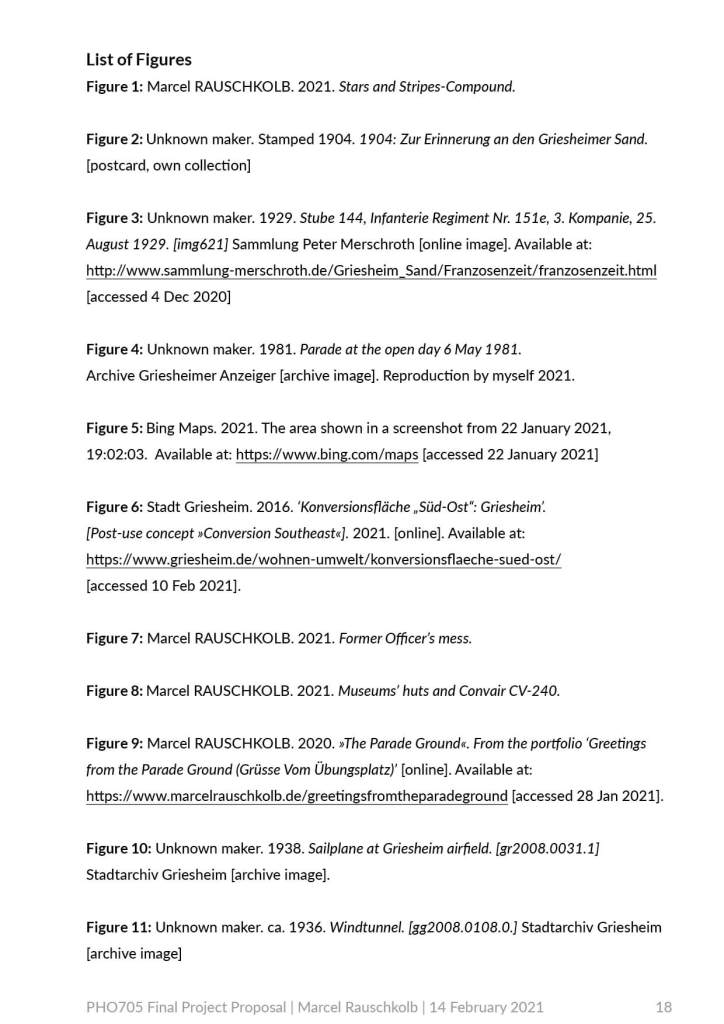
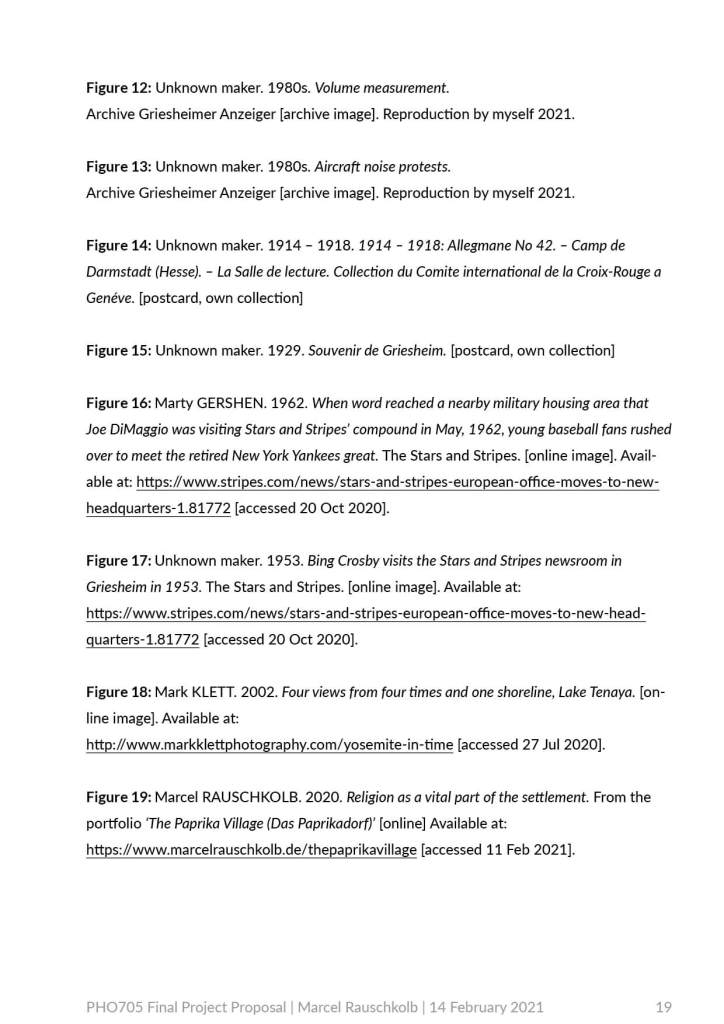


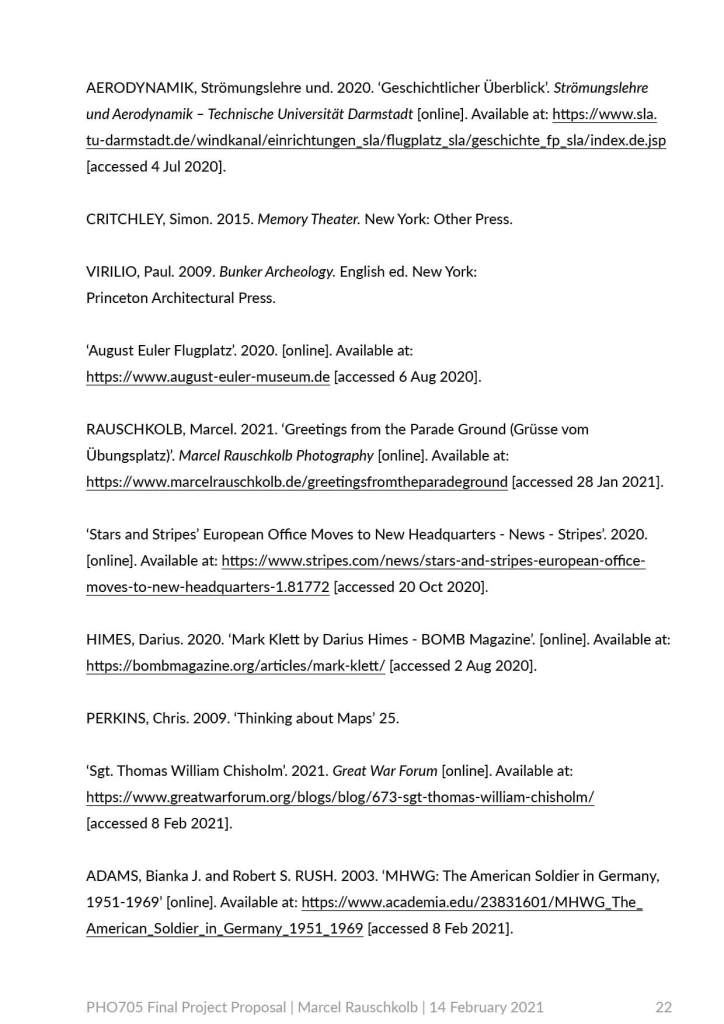

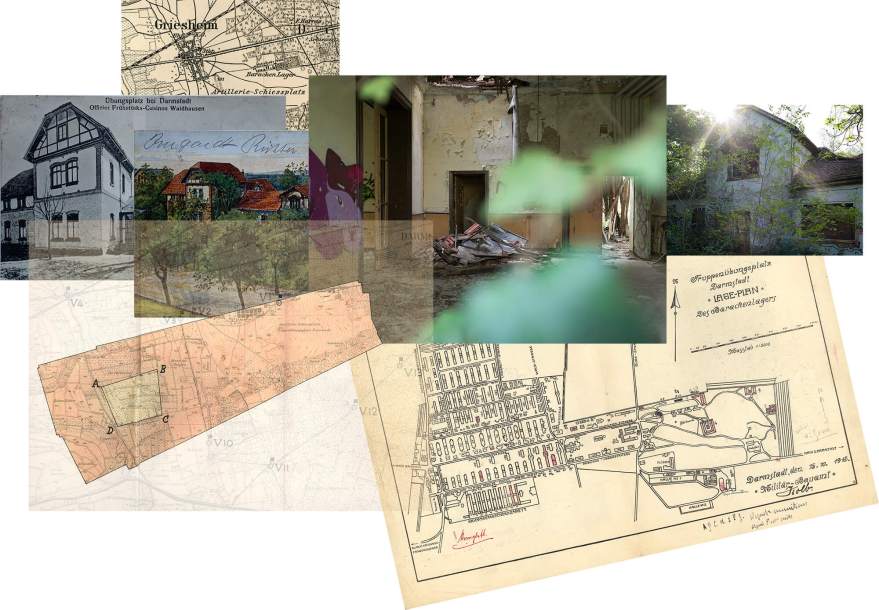











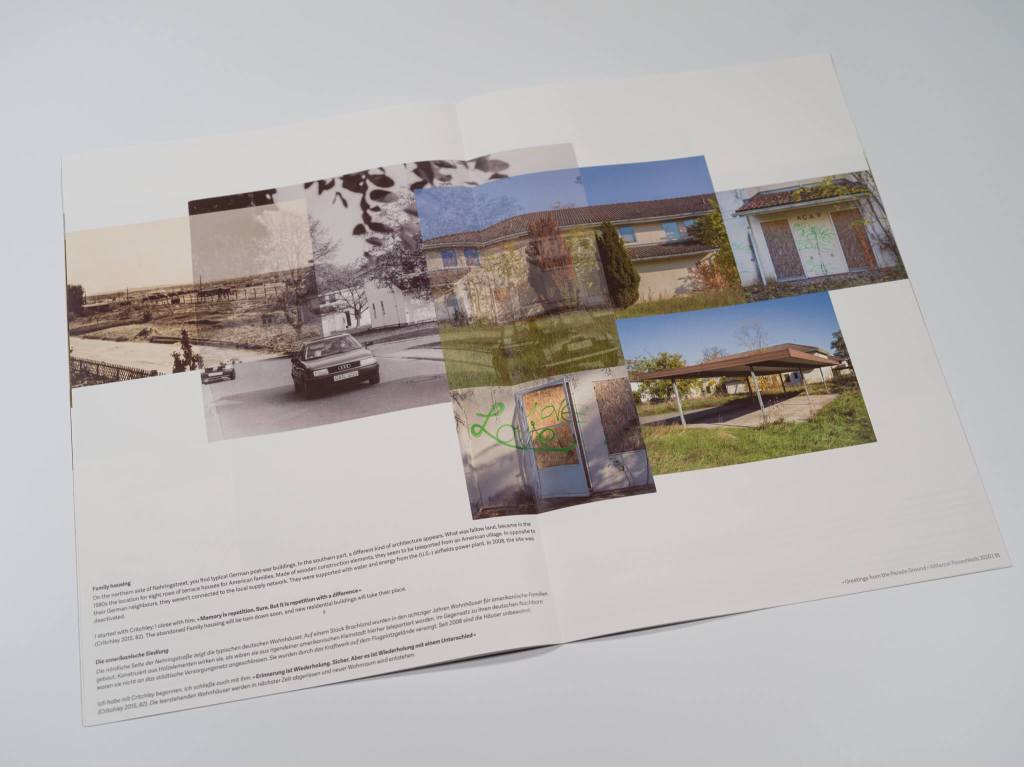




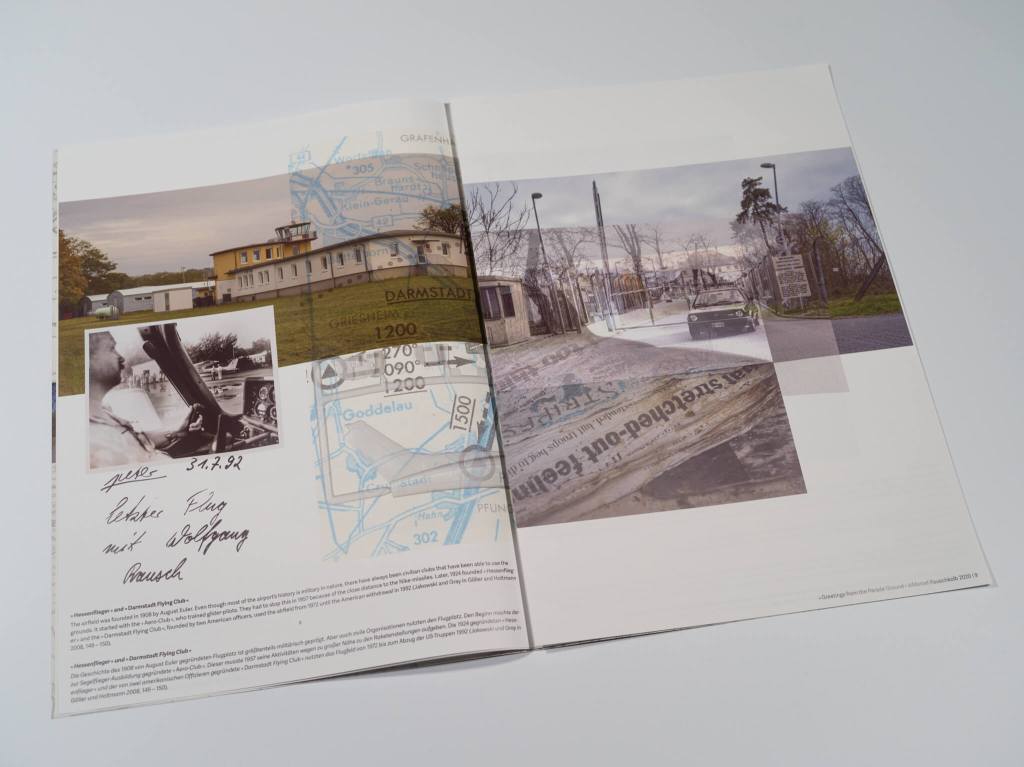




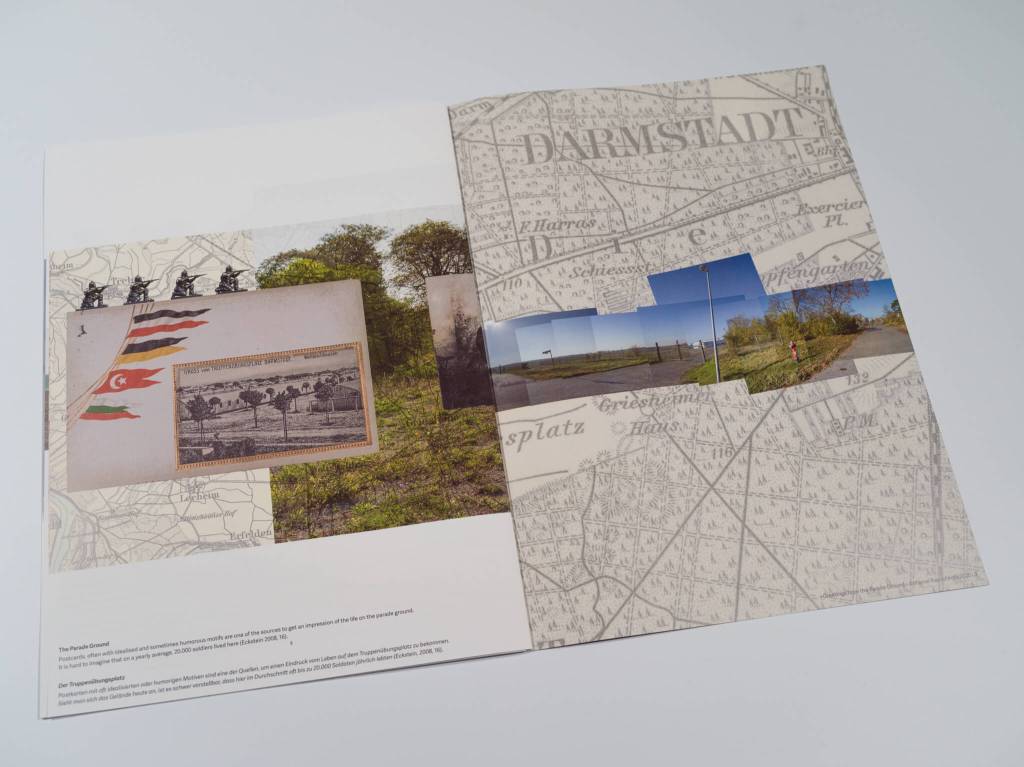


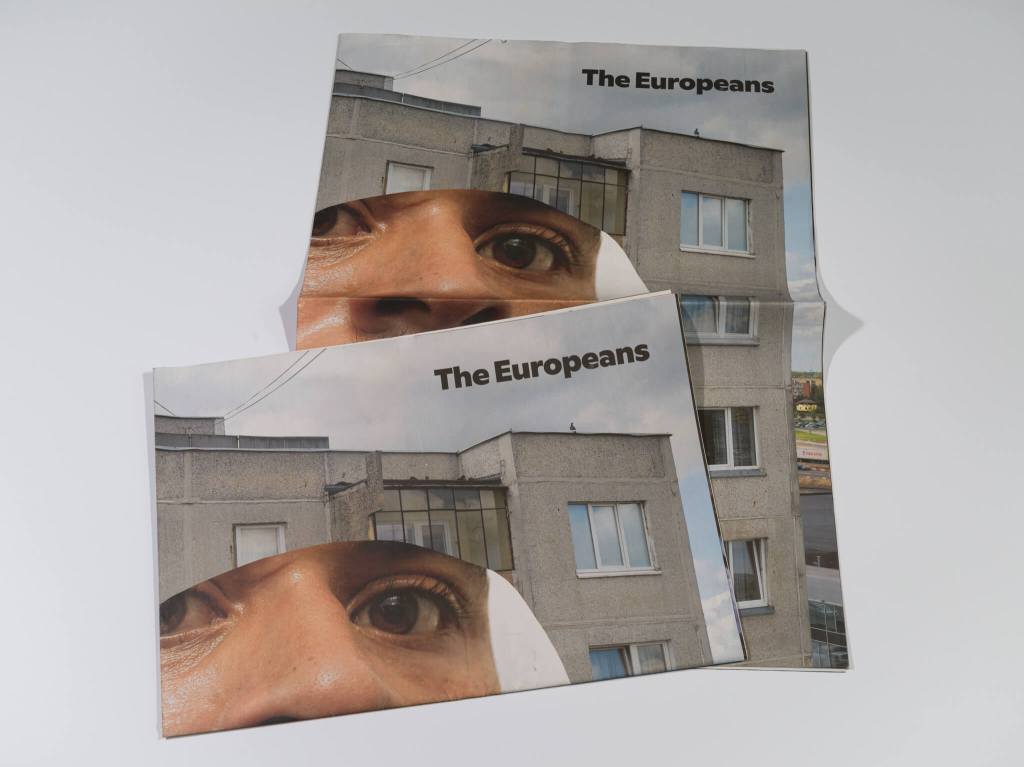


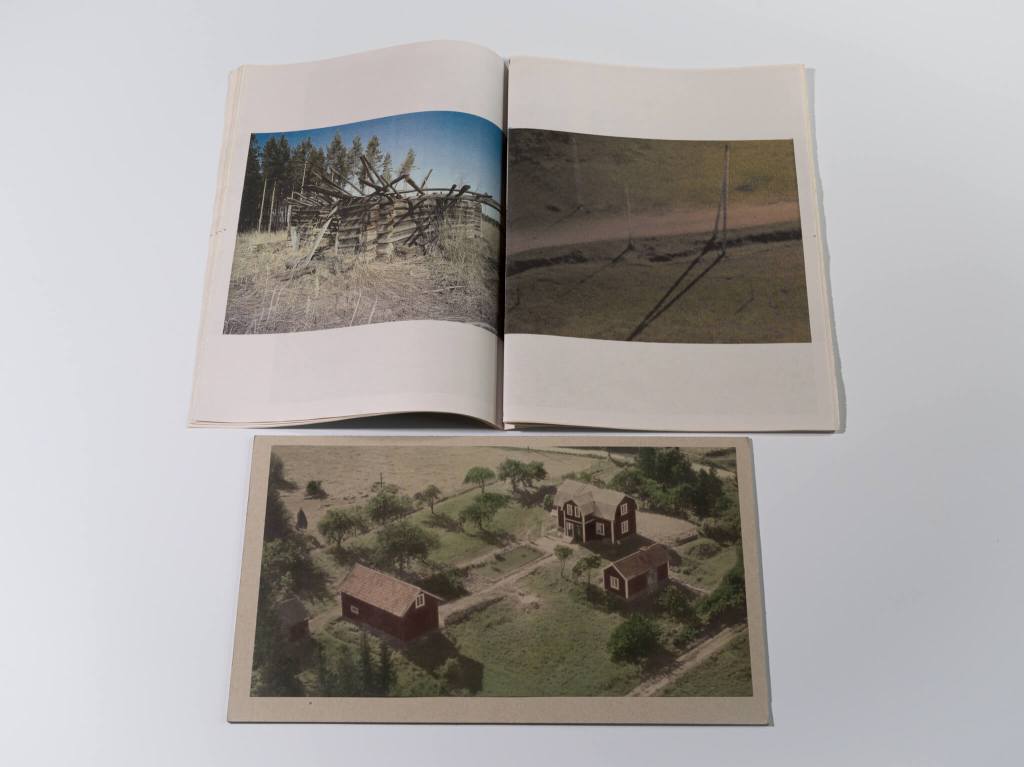

You must be logged in to post a comment.